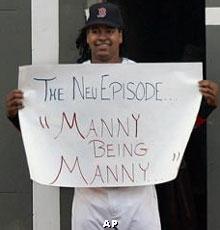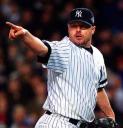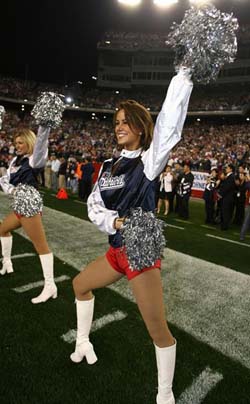In Ex-RedSox News
 Manny “ManRam” Ramirez was signed to a minor league contract to be a player-coach at Triple-A Iowa by The Chicago Cubs and their President of Baseball Operations Theo Epstein, who was with Ramirez for seven years in the Boston. So now he can teach all the young new players how to just be Manny being Manny.
Manny “ManRam” Ramirez was signed to a minor league contract to be a player-coach at Triple-A Iowa by The Chicago Cubs and their President of Baseball Operations Theo Epstein, who was with Ramirez for seven years in the Boston. So now he can teach all the young new players how to just be Manny being Manny.
“While Manny is not and will not be a fit on the Cubs major league roster, we do think at this stage of his life he’s a nice fit as a mentor for some of the young talented hitters we have in the organization. Manny will coach full-time and play part-time in a limited role that does not take at-bats away from our prospects. If he shows there is still some magic in his bat, perhaps he will find his way to the major leagues and help another team, but that is not why he is here. We are thrilled that he wants to work with our young hitters and make a difference.”
Pedro Martinez was one of the best pitchers the game have ever seen, and he takes a little time from his roll of “Special Assistant” (We all know that just means him and Kevin Millar are the Sox official party starters, and they are good at their job.) for the RedSox to discuss the art and science of pitching.
“Pitching is both [art and science] and you have to put them together. You have to study a lot. You have to study the movement of your pitches – the distance your pitches move compared to the swing paths of batters. You have to learn to read bat speed against the speed of a fastball. You can tell a slow bat or a long swing, or a short, quick swing. You counter those things. If a hitter has a slow swing, I don’t want to throw him anything soft. I want to go hard against slow. If he has a quick bat, I probably want to be soft more than I want to be hard. You have to be able to repeat your delivery and be deceiving at the same time.
And one final story, about beer and bats…
The folks @CigarCityBeer announce Homefront IPA, a beer aged on Louisville Slugger maple bats.
— darren rovell (@darrenrovell) May 20, 2014
Cigar City hopes to brew 800 barrels of the baseball bat aged beer. Proceeds donated to Operation Homefront.
— darren rovell (@darrenrovell) May 20, 2014


 So I rolled the ol’ 20-sided
So I rolled the ol’ 20-sided  Hoffman, who holds the record for saves, proceeded to give up two doubles, a triple, and then walk the runners into position for Matt Holliday to score the game-winning (
Hoffman, who holds the record for saves, proceeded to give up two doubles, a triple, and then walk the runners into position for Matt Holliday to score the game-winning ( Howard L. Penn of the U.S. Naval Academy, in the course of figuring the home-runniness of various ballparks, came across an answer. Using Halley’s rule, a centuries-old formula for determining the amount of powder needed to land a cannonball on a given target, he came up with some interesting figures.
Howard L. Penn of the U.S. Naval Academy, in the course of figuring the home-runniness of various ballparks, came across an answer. Using Halley’s rule, a centuries-old formula for determining the amount of powder needed to land a cannonball on a given target, he came up with some interesting figures.